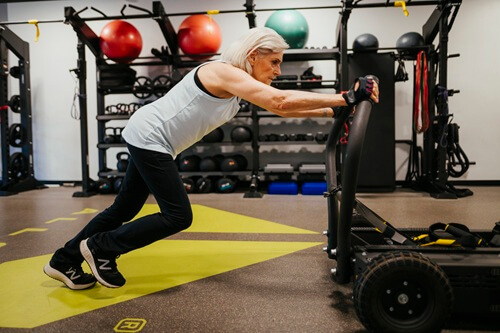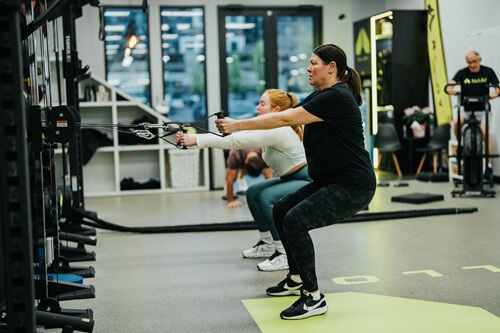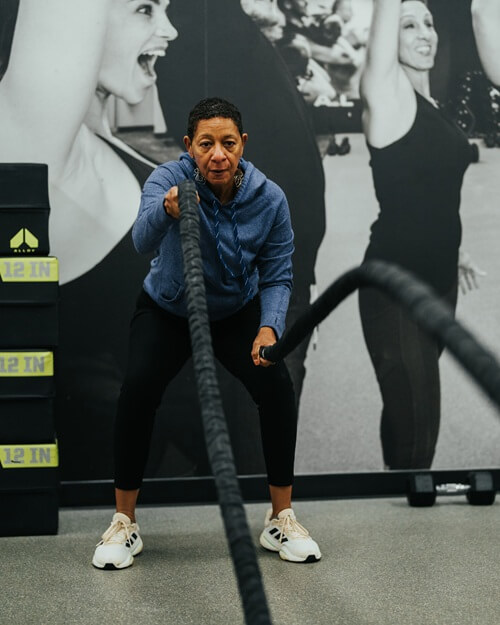Stronger With Age: How Alloy Personal Training Helps You Build a Better Healthspan

Aging is inevitable—but how we age is something we can influence. Think healthspan, not lifespan.
For decades, the conversation around aging and health has revolved around eating well, staying active, and going for routine checkups. But there's one vital component of healthy aging that's often overlooked: strength training.
Strength training, also known as resistance or weight training, is not just for athletes or bodybuilders. It is one of the most effective tools for maintaining health, independence, and quality of life well into our later years. In fact, as we age, strength training becomes even more important, not less.
Why Strength Training Matters with Age
Our bodies are designed to move, lift, and carry. But as we age, we naturally begin to lose muscle mass in a process called sarcopenia—a condition that begins as early as our 30s and accelerates with age.
Without intervention, the average person can lose 3% to 8% of muscle mass per decade after age 30. This not only impacts physical strength and mobility but can also lead to:
- Balance problems and increased fall risk
- Slower metabolism and weight gain
- Insulin resistance and type 2 diabetes
- Loss of independence
Strength training helps combat sarcopenia, improves bone density, and promotes metabolic health, all of which are essential for a high quality of life as we grow older.

Dispelling Myths About Strength Training and Age
Many older adults hesitate to begin strength training due to fear or misinformation. Let’s clear up a few common myths:
Myth #1: “I’m too old to start.”
Reality: It’s never too late. People in their 70s, 80s, and even 90s have shown dramatic improvements in strength and mobility from weight training programs. The key is to start slowly and progress safely.
Myth #2: “Strength training is dangerous.”
Reality: With proper guidance and technique, strength training is safer than being sedentary. Working with a certified trainer or taking a beginner-friendly class helps minimize risks.
Myth #3: “It’s only for men.”
Reality: Strength training is equally beneficial for women, especially post-menopausal women who are at greater risk of osteoporosis. Building muscle supports hormonal health and physical confidence.
Myth #4: “I’ll get bulky.”
Reality: Building large muscles requires intense, targeted training and nutrition. For most adults, especially older ones, strength training simply results in improved tone, posture, and energy levels.
Myth #5: “It’s too time consuming.”
Reality: Studies show that strength training 2-3 times per week is the best cadence. This allows the body to rest and repair in between sessions.

How to Get Started: Strength Training at Any Age
Here are a few ways to ease into strength training:
- Bodyweight Exercises
Simple movements using your own body weight can be incredibly effective:
- Squats
- Wall sits
- Push-ups (on the wall or knees)
- Step-ups
- Glute bridges
- Resistance Bands
Lightweight and portable, resistance bands are a great entry point and offer a full-body workout. - Free Weights or Machines
Dumbbells, kettlebells, and weight machines allow you to gradually increase resistance as you gain strength. - Incorporate Movement into Daily Life
- Carry groceries instead of using a cart
- Do a few squats while brushing your teeth
- Walk with ankle or wrist weights
- Practice balance by standing on one foot at the sink
- Classes Designed for Older Adults
Look for fitness programs or personal trainers who specialize in functional fitness or active aging. These programs emphasize safe, effective movements tailored for older populations.
At Alloy Personal Training King Farm, our certified trainers work with small groups of individuals ranging from beginners to those with years of exercise experience. Each session consists of no more than 6 participants, all working toward individualized goals. Workouts include all of the modalities mentioned above – bodyweight, bands, dumbbells, and machines – doing functional exercises that mimic everyday activities such as lifting groceries, grandkids, and everything in between! We would love to meet with you to discuss your goals and create a plan for a long healthspan. Let’s all focus on the quality of the years we have, so that we can enjoy life!
